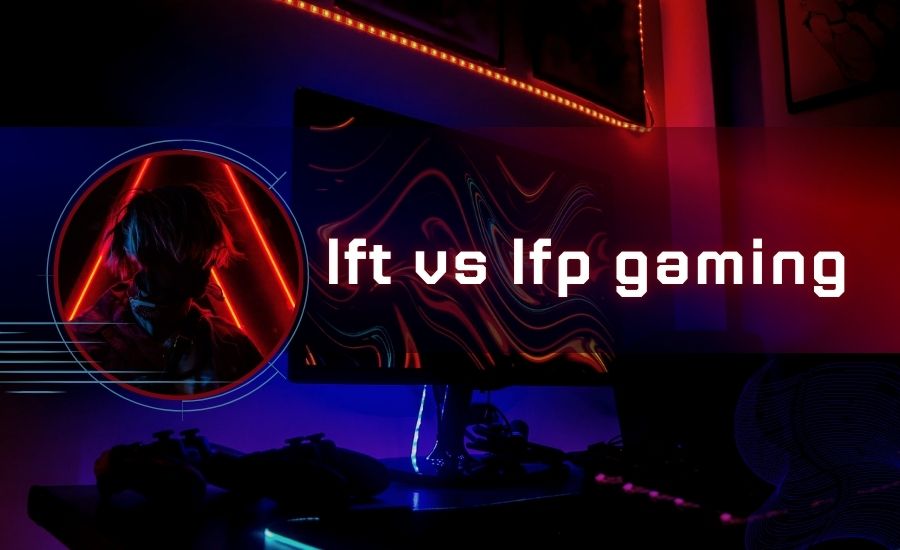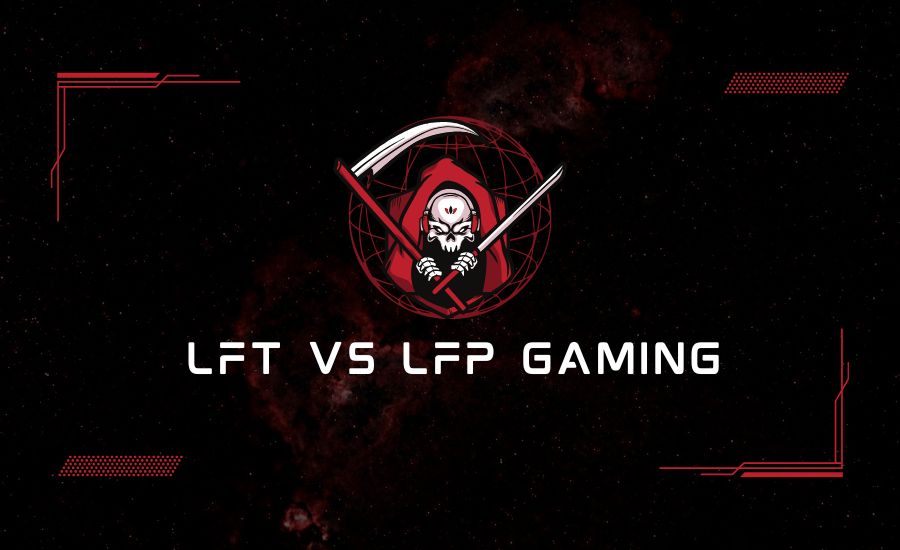The world of gaming is constantly evolving, and with it, so are the ways players connect and collaborate. Two common terms you’ll encounter in multiplayer gaming are LFT (Looking for Team) and LFP (Looking for Player). Although they may seem similar on the surface, they represent different strategies for team-building and community interaction. This guide will help you explore these two approaches in-depth, allowing you to make an informed decision about which one suits your style, goals, and needs.
In this article, we will explore the dynamics between LFT and LFP gaming, breaking down their benefits, challenges, and potential outcomes. By understanding how these concepts work, you’ll be better prepared to choose the path that enhances your gaming experience and boosts your performance.
What is LFT (Looking for Team)?
LFT, or Looking for Team, refers to individual players who are actively seeking to join an established team. In many gaming communities, particularly in competitive settings like MOBAs (Multiplayer Online Battle Arenas), first-person shooters, or even MMORPGs (Massively Multiplayer Online Role-Playing Games), players often prefer to play as part of a cohesive group. This is where LFT becomes an essential tool.
When a player is LFT, they are essentially marketing themselves to teams. They want to find a group that shares their play style, goals, and level of competitiveness. Whether you’re a seasoned player aiming to climb the ranks or a casual gamer looking for a more structured environment, being LFT helps you position yourself for success.
The Benefits of Being LFT
- Team Synergy: One of the most significant advantages of LFT is the opportunity to join a team with established chemistry. This means you can integrate into a group that already knows how to communicate effectively and work toward shared goals.
- Skill Growth: Joining an experienced team gives you a chance to learn from others. If you’re a newer player, being part of a strong team can fast-track your understanding of strategies and mechanics.
- Role Specialization: When looking for a team, you can search for one that requires your specific skills or role preferences, allowing you to focus on what you do best.
However, the process of being LFT is not without its challenges.
The Drawbacks of Being LFT
- Finding the Right Fit: It can be difficult to find a team that matches your playstyle, skill level, and availability. Misaligned goals or mismatched personalities can lead to frustration.
- Team Hierarchies: Established teams often come with pre-existing hierarchies and dynamics, which can make it challenging for a newcomer to find their place.
- Competitive Pressure: If you’re joining a high-level team, there may be significant pressure to perform. This can be stressful for players who are still developing their skills.
Overall, LFT gaming offers immense opportunities for those willing to take the time to find a compatible team, but it requires patience and a commitment to teamwork.
What is LFP (Looking for Player)?

On the other side of the coin, LFP, or Looking for Player, is when teams are actively searching for new members to fill specific roles. This is commonly seen in competitive gaming environments, where teams need to recruit players to complete their rosters or fill vacancies due to players leaving.
Teams that post LFP notices are usually looking for specific skills or experiences, such as players who excel at particular roles (healer, tank, sniper, etc.), or who have a specific rank or level of experience. LFP is a more targeted form of recruitment, focusing on finding the right person to fit into an already established group.
The Benefits of LFP
- Control Over Recruitment: Teams using the LFP method have control over who they bring in, allowing them to vet candidates and find the perfect fit for their needs.
- Team Consistency: By recruiting players who meet specific requirements, teams can ensure that their roster remains balanced and well-coordinated, which is essential for long-term success.
- Role-Specific Recruitment: LFP allows teams to recruit players who excel in particular roles, ensuring that the team has all the skills necessary for competitive success.
The Drawbacks of LFP
- High Turnover: Teams often face high turnover rates when recruiting new players, as the fit may not always be perfect. This can lead to instability and frequent roster changes.
- Time-Consuming Process: Finding the right player can take time, as teams may need to conduct trials or go through several candidates before making a final decision.
- Cultural Fit: Even if a player meets all the technical requirements, they may not fit well with the team’s culture, leading to potential conflicts or dissatisfaction.
LFP gaming offers teams the ability to fine-tune their roster, but it requires careful consideration and a willingness to invest time in the recruitment process.
LFT vs LFP: Key Differences
While both LFT and LFP are designed to help gamers and teams connect, they do so in very different ways. Here are some key distinctions:
- Player vs. Team Focus: LFT is player-driven, focusing on individuals looking to join teams, while LFP is team-driven, focusing on teams recruiting players.
- Flexibility: LFT offers more flexibility for players, as they can move between teams if they find a better fit. LFP, on the other hand, often requires a longer-term commitment from players.
- Recruitment Dynamics: LFT players need to sell themselves to teams, showcasing their skills and experience, whereas LFP teams are in control of the selection process, looking for specific qualifications.
- Pressure and Expectations: LFT gamers may face pressure to prove themselves to new teammates, while LFP recruits are often vetted thoroughly to ensure they meet the team’s standards.
These differences highlight the importance of understanding your own goals and needs when deciding whether to pursue an LFT or LFP path.
Choosing Between LFT and LFP: What’s Right for You?
When deciding between LFT and LFP, there are several factors to consider. Your personal preferences, skill level, and gaming goals will play a significant role in determining which option is best for you.
1. Skill Level
- LFT: If you’re still developing your skills and want to learn from more experienced players, LFT is an excellent choice. Being part of a team can help you grow faster and improve your gameplay.
- LFP: If you’re a seasoned player with specific strengths, LFP may be the better option. Teams looking for players often seek highly skilled individuals to fill important roles, offering you the chance to shine in your specialty.
2. Time Commitment
- LFT: LFT offers more flexibility, as you can find teams that match your schedule and level of commitment. Whether you want to play casually or competitively, there’s a team for you.
- LFP: LFP teams often require a higher level of commitment, including regular practice sessions and competitive matches. If you have the time and dedication, this path can offer a more structured gaming experience.
3. Social Preferences
- LFT: If you enjoy meeting new people and forming new connections, LFT is a great way to expand your social circle. Many LFT players value the friendships they build through gaming.
- LFP: LFP teams tend to be more close-knit, with members who have played together for a long time. If you prefer a stable, familiar environment, LFP might be a better fit.
4. Goals
- LFT: If your primary goal is to improve your gameplay, climb the ranks, and learn from others, LFT can provide the mentorship and team dynamics you need.
- LFP: If you’re focused on winning tournaments or competing at a high level, LFP teams often offer more competitive environments, allowing you to push yourself to new heights.
By carefully considering these factors, you can choose the path that best aligns with your gaming style and objectives.
Read Also: Gamepro-Keyboard-Software-Download
The Importance of Team Dynamics in LFT and LFP Gaming

Whether you’re pursuing an LFT or LFP approach, understanding team dynamics is crucial to your success. Team chemistry, communication, and collaboration are key factors that influence both individual and team performance.
1. Communication
Effective communication is the backbone of any successful team. LFT players must quickly adapt to new communication styles when joining a team, while LFP recruits need to integrate into existing communication structures. Clear and open dialogue is essential for achieving goals and maintaining harmony.
2. Collaboration
Teamwork is at the heart of LFT and LFP gaming. Both approaches require players to work together toward common objectives, whether it’s winning a match or improving team performance. Collaboration fosters trust and cohesion, leading to better results.
3. Conflict Resolution
In any team, conflicts are bound to arise. LFT players may need to navigate power dynamics within established teams, while LFP teams must ensure that new recruits fit into the group without causing friction. Developing strong conflict resolution skills is essential for maintaining a healthy team environment.
The Future of LFT and LFP Gaming
As gaming continues to grow and evolve, so too will the ways players connect and collaborate. The rise of esports, streaming platforms, and online communities has transformed the gaming landscape, making LFT and LFP more relevant than ever.
1. AI and Automated Matchmaking
In the future, AI-driven matchmaking systems may play a larger role in LFT and LFP gaming. These systems could analyze player data, preferences, and performance to match players with teams more effectively, reducing the time and effort required to find the right fit.
2. Cross-Platform Compatibility
With the increasing popularity of cross-platform gaming, LFT and LFP gaming will likely become even more flexible. Players will be able to find teams and recruit members across different consoles and platforms, creating more diverse and inclusive gaming communities.
3. Enhanced Social Features
As gaming communities continue to grow, platforms may introduce new social features that make it easier for LFT and LFP players to connect. These features could include advanced communication tools, personalized recommendations, and community events that foster collaboration and teamwork.
Conclusion: Mastering LFT vs LFP Gaming
In the end, whether you choose the LFT or LFP path depends on your personal preferences, goals, and gaming style. Both approaches offer unique opportunities for growth, collaboration, and success. By understanding the dynamics of each, you can make an informed decision that enhances your gaming experience and helps you achieve your objectives.
Remember, LFT and LFP are not just about finding teammates—they’re about building lasting connections, improving your skills, and creating memorable gaming experiences. Whichever path you choose, embrace the journey and enjoy the rewards that come with teamwork and collaboration.
This article has been designed to help you understand the nuances of LFT vs LFP gaming and provide you with the information you need to outperform competitors and elevate your gaming experience. Make sure to apply these insights carefully, and soon you’ll find yourself excelling in the world of multiplayer gaming.
FAQs:
Q: What does LFT stand for in gaming?
A: LFT stands for “Looking For Team,” where individual players search for a team to join.
Q: What is LFP in gaming?
A: LFP means “Looking For Player,” where teams seek out players to fill specific roles.
Q: How do I decide between LFT and LFP?
A: If you’re an individual looking for a team, choose LFT. If you’re a team leader seeking players, opt for LFP.
Q: Can I switch from LFT to LFP gaming?
A: Yes, you can. Many players start by looking for a team (LFT) and later build their own team, switching to LFP.
Q: What games use LFT and LFP systems?
A: Popular games like League of Legends, Overwatch, and Fortnite commonly use LFT and LFP systems.
Read More Latest Blogs on: Dallas Insiders
